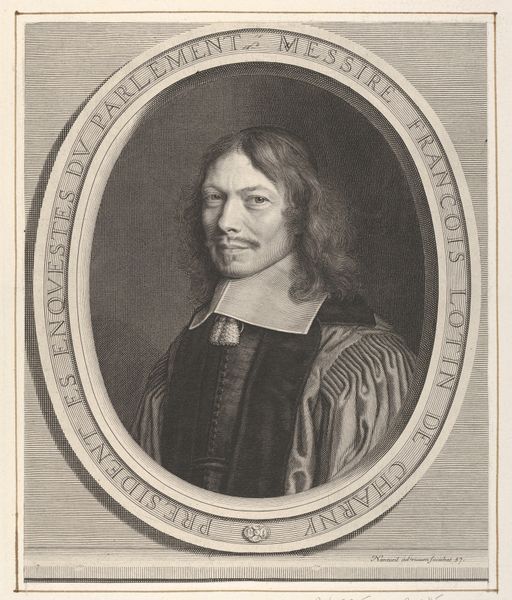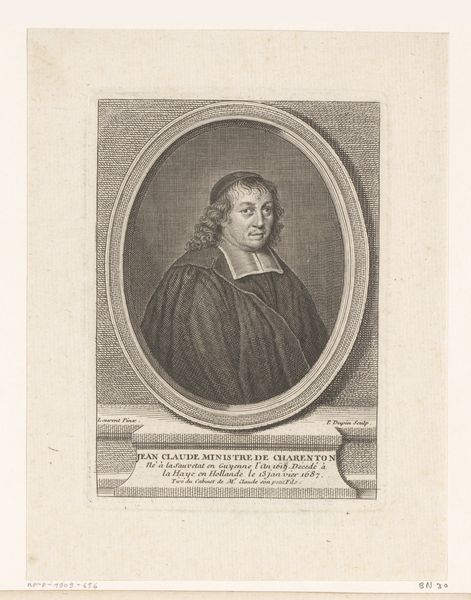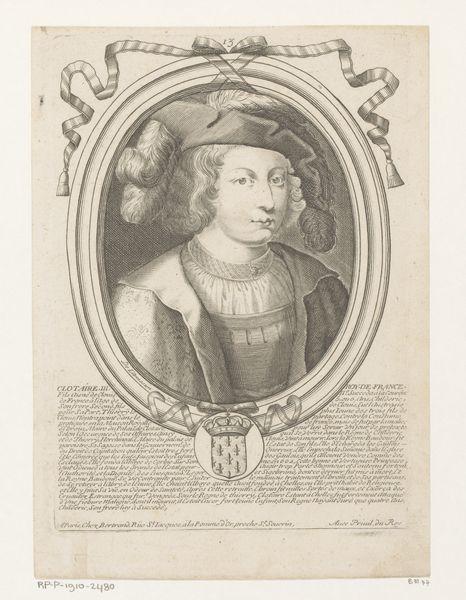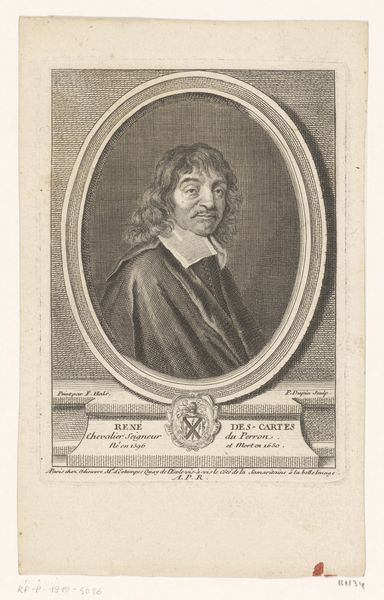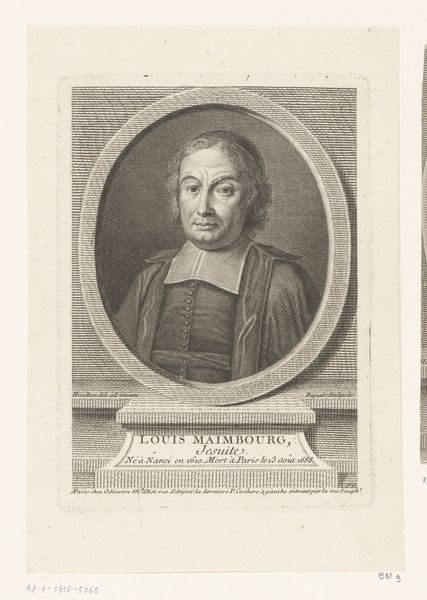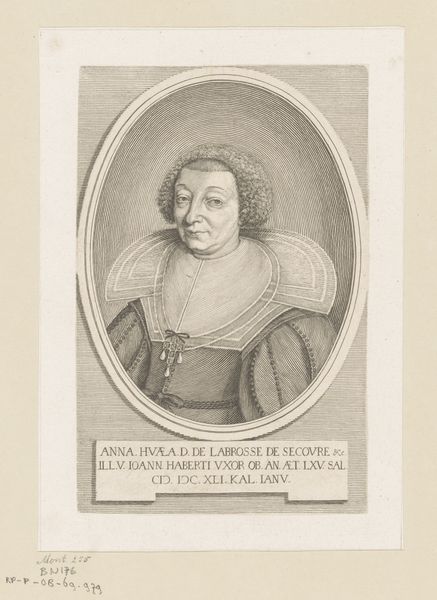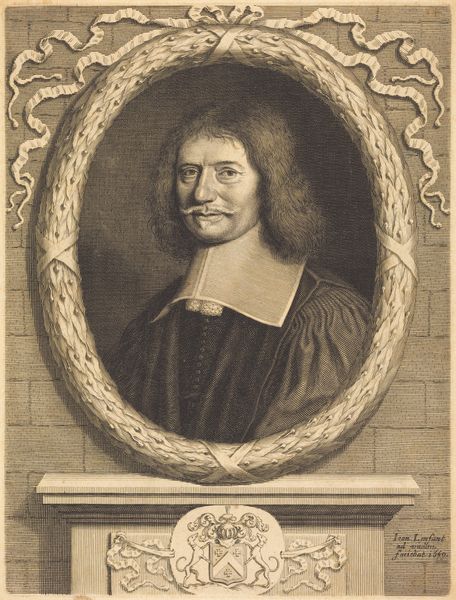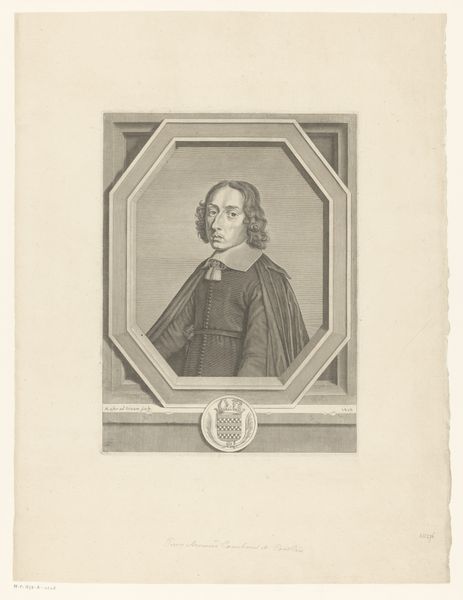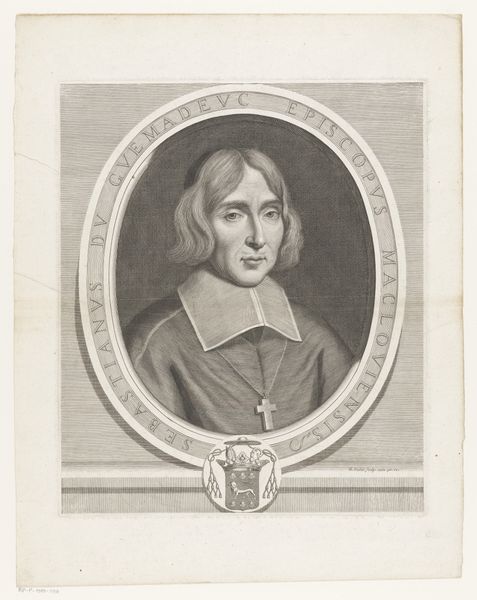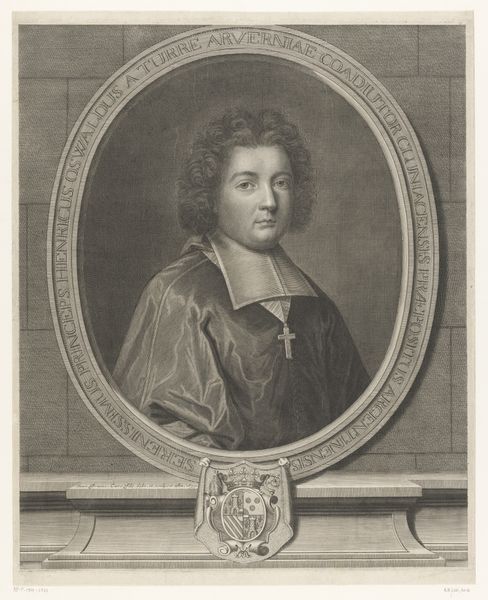
print, engraving
#
portrait
#
baroque
# print
#
figuration
#
academic-art
#
engraving
Dimensions: height 128 mm, width 705 mm
Copyright: Rijks Museum: Open Domain
Pierre Landry produced this portrait of Léon Potier de Gesvres, likely sometime in the late 17th century, using engraving techniques. The image is constructed entirely from tiny etched lines in a metal plate, which would then have been inked and pressed onto paper. Look closely, and you’ll see that the varying density and direction of these lines create a sense of light, shadow, and texture. This was an incredibly skilled process, requiring not only artistic talent but also a deep understanding of metallurgy and printing. Engraving was also a labor-intensive process, and the resulting prints would have been relatively expensive. This made them luxury goods, accessible to a limited clientele. The choice of engraving as a medium, therefore, speaks to the social status of the sitter. It suggests a world of careful craftsmanship, social hierarchy, and controlled dissemination of images. Considering these aspects of making helps us understand how art and social status were intertwined in the early modern era.
Comments
No comments
Be the first to comment and join the conversation on the ultimate creative platform.
